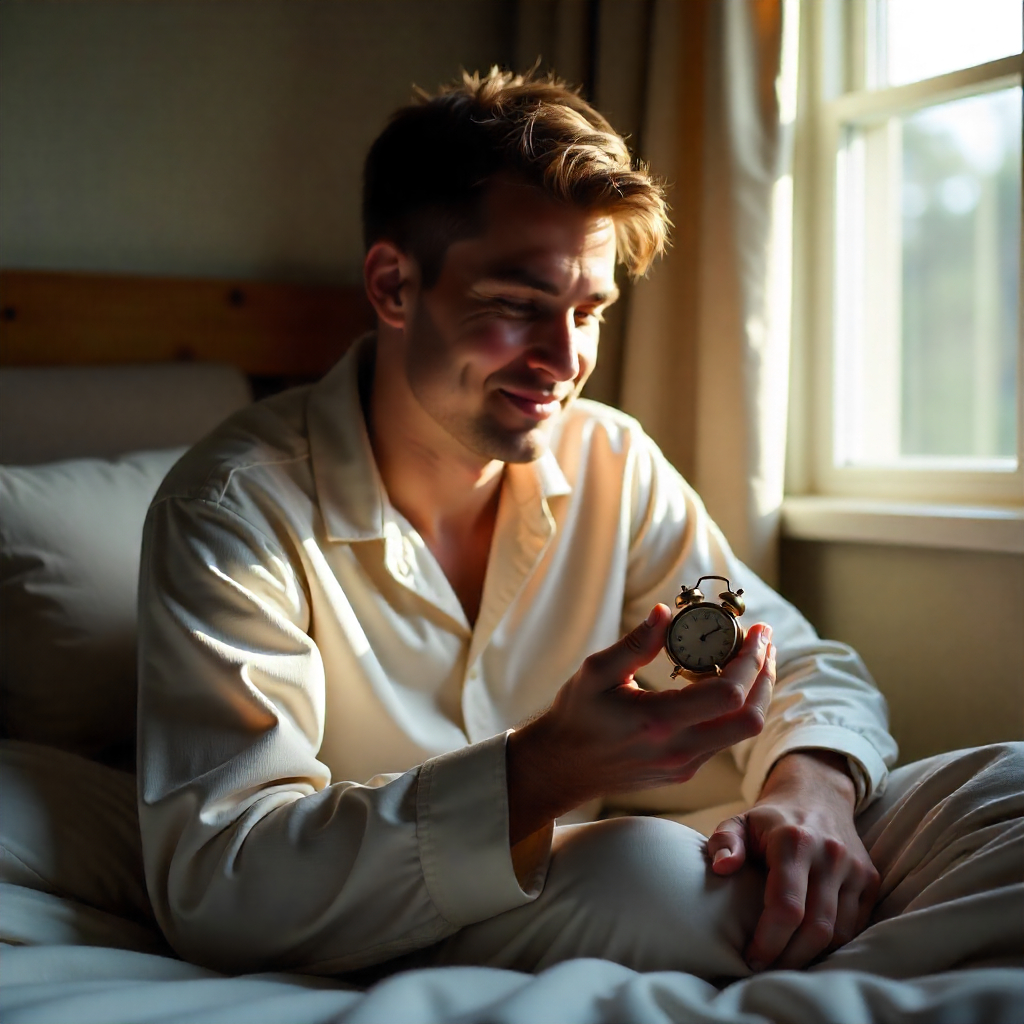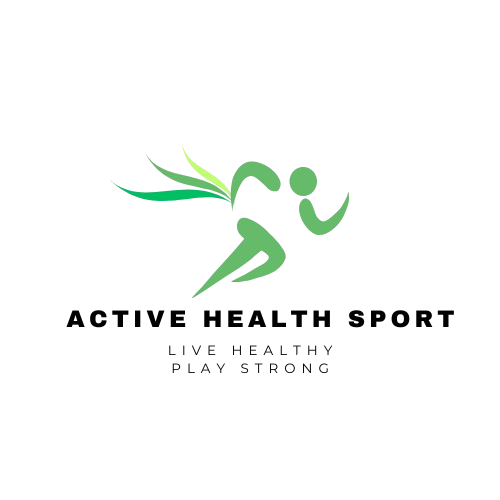Why You Feel Tired Even After Sleeping Enough
Have you ever slept for eight hours and still felt groggy the next morning?
The issue might not be how long you sleep, but when you sleep.
Your body operates on a natural 24-hour internal clock called the circadian rhythm, which regulates everything from hormone release to temperature, alertness, and metabolism.
When this rhythm falls out of sync, due to irregular schedules, late-night screen use, or stress, energy levels, focus, and even muscle recovery suffer.
For athletes, professionals, and health-conscious individuals, understanding your circadian rhythm is the key to unlocking sustainable performance and daytime energy. Let’s dive deeper into it, stay with us folks!
What Is the Circadian Rhythm?
The circadian rhythm is your body’s internal timekeeper, controlled by a small region in the brain called the suprachiasmatic nucleus (SCN) located in the hypothalamus. This biological clock responds to light and darkness, telling your body when it’s time to be alert or rest.
How It Works
- Morning (6-10 AM): Cortisol levels rise to wake you up and boost alertness.
- Afternoon (12-4 PM): Core body temperature peaks, best time for physical activity.
- Evening (6-10 PM): Melatonin begins to increase, preparing your body for rest.
- Night (10 PM-6 AM): Deep sleep dominates; cellular repair and memory consolidation occur.
The Biological Basis of the Circadian Clock
Your circadian rhythm is powered by clock genes, special genes that regulate daily cycles in almost every cell. These include:
- CLOCK and BMAL1: Promote wakefulness and daytime activity
- PER and CRY: Trigger nighttime rest and melatonin release
When these genes are disrupted by artificial light, inconsistent sleep times, or night shifts, your body’s entire system, metabolism, hormones, and mental clarity get thrown off balance.
Also Read: How Morning Walks Regulate Your Circadian Rhythm Naturally
Circadian Rhythm and Sleep-Wake Cycle: The Deep Connection
Sleep quality depends not just on hours but on timing.
Your circadian rhythm decides when your body releases melatonin, the sleep-inducing hormone, and cortisol, the wake-up signal.
| Time of Day | Dominant Hormone | Body Effect |
| 6:00–9:00 AM | Cortisol | Boosts alertness, raises body temp |
| 10:00 AM–2:00 PM | Dopamine & Adrenaline | Peak focus and energy |
| 2:00–4:00 PM | Serotonin | Stable mood and calm focus |
| 9:00–11:00 PM | Melatonin | Induces drowsiness and recovery mode |
| 2:00–4:00 AM | Growth Hormone | Cellular repair and tissue healing |
How Circadian Rhythm Affects Energy, Mood, and Performance
1. Physical Energy
When you align your sleep and activity with your biological clock, your body’s core temperature, muscle efficiency, and oxygen utilization work in sync, improving athletic output and stamina.
2. Mental Focus
The rhythm controls neurotransmitters like dopamine and serotonin, which govern motivation and emotional stability. Disruption leads to brain fog, poor concentration, and irritability.
3. Hormonal Balance
Hormones like testosterone, insulin, and cortisol follow circadian cycles. Misalignment can result in slower metabolism, poor recovery, and even insulin resistance.
Circadian Misalignment: The Modern Energy Killer
Modern lifestyles, late-night scrolling, inconsistent bedtimes, and 24-hour lighting constantly confuse the circadian system.
This “jet lag without travel” leads to:
- Morning fatigue and afternoon crashes
- Disrupted hunger and digestion
- Weakened immune response
- Decreased exercise performance
A 2024 study in Nature Communications found that even a two-hour delay in bedtime can reduce next-day alertness by 30%, regardless of total sleep duration.
Signs Your Circadian Rhythm Is Out of Sync
| Symptom | Possible Cause | Impact |
| Trouble falling asleep | Too much evening light | Melatonin suppression |
| Waking up tired | Inconsistent bedtime | Poor deep sleep duration |
| Midday crashes | Poor light exposure in the morning | Low cortisol alignment |
| Low motivation | Irregular meals/sleep | Dopamine imbalance |
| Digestive discomfort | Eating too late | Disrupted metabolism |
How to Realign Your Circadian Rhythm Naturally
1. Get Morning Sunlight Exposure
Light is the strongest signal for your circadian rhythm.
Spend 10-15 minutes outside within 30 minutes of waking to cue your brain that it’s daytime.
Tip: Morning light suppresses melatonin and boosts serotonin, improving energy and mood.
2. Maintain a Consistent Sleep-Wake Schedule
Go to bed and wake up at the same time daily, even on weekends.
Your body thrives on rhythm; inconsistency confuses hormonal release.
3. Limit Artificial Light After Sunset
Blue light from devices tricks your brain into thinking it’s still daytime.
Use “night mode” settings or blue-light blocking glasses 2 hours before bed.
4. Align Meals with Your Active Hours
Eat larger meals earlier in the day when insulin sensitivity is highest.
Avoid heavy food after 8 PM to prevent digestive strain and sleep interference.
| Time | Meal Type | Best Nutrients |
| 7–9 AM | Breakfast | Protein + Complex Carbs |
| 12–2 PM | Lunch | Balanced Macronutrients |
| 5–7 PM | Dinner | Light Protein + Veggies |
| 8–9 PM | Optional Snack | Tryptophan-rich foods (e.g., almonds, yogurt) |
5. Exercise at the Right Time
Your body is most physically capable between 2-6 PM, when muscle temperature and reaction speed peak.
Morning workouts are great for consistency, but intense evening sessions can delay melatonin release.
6. Create a Sleep-Optimized Environment
- Keep the room dark, cool (18-20°C), and quiet
- Avoid caffeine within 8 hours of bedtime
- Try relaxation techniques like deep breathing or mindfulness

Chronotypes: Why Everyone’s Clock Isn’t the Same
Not everyone’s circadian rhythm runs on the same schedule.
Your chronotype determines whether you’re naturally an early bird or a night owl.
| Chronotype | Best Productivity | Ideal Sleep Window | Energy Pattern |
| Morning Type (“Lark”) | 7–11 AM | 9 PM–5 AM | Peaks early, fades by evening |
| Intermediate (“Third Bird”) | 10 AM–2 PM | 10 PM–6 AM | Balanced rhythm |
| Evening Type (“Owl”) | 2–6 PM | 12 AM–8 AM | Late energy surge |
Knowing your chronotype helps you align tasks, workouts, and meals with your natural biological strengths.
Circadian Rhythm and Athletic Recovery
For athletes, circadian timing influences:
- Muscle power (highest late afternoon)
- Reaction speed (best between 3–7 PM)
- Sleep-dependent recovery (deep sleep between 10 PM–2 AM)
This is why professional sports teams now tailor training sessions and nutrition schedules around their athletes’ internal clocks to enhance performance and recovery.
Also Read the Latest: How Long Before Bed Should You Stop Using Your Phone?
Technology and Sleep Science: The Future of Rhythm Tracking
Modern wearables like Whoop, Oura Ring, and Fitbit Sense track your sleep stages, HRV (Heart Rate Variability), and temperature, providing real-time insights into circadian alignment.
Future AI-based sleep systems (like those being tested by NASA and elite athletes) can predict optimal sleep windows for maximizing recovery and focus.
Real-Life Case Studies: How People Reclaimed Their Energy by Fixing Their Circadian Rhythm
Case Study 1: The Designer Who Finally Beat Morning Fatigue
Profile: 32-year-old UX designer working remotely with inconsistent sleep patterns.
Problem: Constant morning grogginess, heavy afternoon crashes, and trouble concentrating during client calls, despite going to bed “on time.”
Discovery: Sleep tracker revealed delayed melatonin production and inconsistent wake times. She also had minimal sunlight exposure in the first half of the day.
Intervention:
- Added 15 minutes of morning sunlight exposure immediately after waking
- Set a fixed 11 PM–7 AM sleep window
- Reduced screen exposure 90 minutes before bed using warm lighting and blue-light filters
- Introduced magnesium-rich foods in her evening meals
Result (after 4 weeks): - Reported feeling naturally awake without caffeine
- Afternoon energy slumps reduced by 70%
- Noticed improved creativity and sustained attention during long design sessions
Case Study 2: The Night Owl Accountant Who Shifted His Entire Routine
Profile: 45-year-old senior accountant, lifelong late sleeper, often worked past midnight.
Problem: Persistent daytime tiredness, irritability, inconsistent hunger cues, and trouble falling asleep earlier, especially during tax season.
Discovery: His internal clock was delayed by almost 2 hours, leading to chronic circadian misalignment.
Intervention:
- Gradually shifted bedtime earlier by 20 minutes every night
- Used a 10,000-lux light therapy lamp for 15 minutes every morning
- Scheduled meals at consistent times to reinforce internal rhythms
- Avoided late-night heavy meals and evening caffeine entirely
Result (after 6 weeks): - Achieved a stable 10:30 PM–6:30 AM rhythm
- Reported clearer thinking during early meetings, with improved mood and productivity
- Reduced dependence on energy drinks from 2 per day to zero
Supporting Resource: Evidence on light therapy for circadian disorders.
Also Read the Latest: How Sleep Tourism Became 2025’s Leading Wellness Trend
Case Study 3: The Teacher Who Recovered From Chronic Midday Slumps
Profile: 39-year-old middle school teacher juggling long workdays and family duties.
Problem: Daily 1–3 PM energy dips, difficulty staying alert during classes, restless sleep, and weekend oversleeping.
Discovery: Her sleep schedule fluctuated heavily between weekdays and weekends, creating “social jet lag.”
Intervention:
- Set a consistent wake time, even on weekends
- Started taking students outside for short sunlight breaks between classes
- Maintained a nighttime wind-down routine: stretching, warm shower, dim lighting
- Avoided electronic screens after 9 PM
Result (after 3 weeks): - No more severe afternoon crashes, reported steady energy all day
- Better sleep quality and fewer nighttime awakenings
- Noticed a calmer mood and better classroom engagement from both students and herself.
Have Your Own Story? We’d Love to Hear It!
At Active Health Sport, we believe real stories inspire real change.
If you’ve ever struggled with sleep, morning energy, or fixing your body clock, your journey could help someone else finally take the first step.
Feel free to share your story with our team. Whether it’s a big win or a small improvement, we’re here to celebrate your progress and support your next steps.
Just send us a message through our contact page. We’re always listening, learning, and cheering you on. 💙
Final Thoughts: Sync Your Clock, Unlock Your Energy
Your circadian rhythm is about your daily performance engine. By aligning light, food, and activity with your biological clock, you can wake up refreshed, stay alert, and perform at your best, both physically and mentally.
In the end, discipline in rhythm equals freedom in energy. Protect your sleep schedule as seriously as your workout, because your internal clock always keeps score.
Frequently Asked Questions (People Also Ask)
How long does it take to reset a disrupted circadian rhythm?
Resetting a disrupted circadian rhythm typically takes 7-14 days of consistent habits. Prioritizing fixed sleep and wake times, morning sunlight exposure, reduced evening screen use, and stable meal timing helps your internal clock realign more quickly and naturally.
Can I adjust my sleep schedule if I’m a night owl?
Yes. Night owls can gradually shift their sleep schedule by moving bedtime 15-30 minutes earlier each day. Pairing this with morning bright-light exposure and limiting late-night stimulation trains the brain to adopt an earlier rhythm more comfortably.
Does blue light really affect sleep quality?
Yes. Blue light suppresses melatonin, the hormone responsible for initiating sleep, which delays deep sleep and increases nighttime awakenings. Reducing blue-light exposure 1-2 hours before bed or using blue-light filters significantly improves sleep quality and circadian balance.
What are the best foods to support circadian balance?
Foods high in magnesium, tryptophan, omega-3 fatty acids, and antioxidants, such as bananas, almonds, oats, tart cherries, and fatty fish, help relax the nervous system, stabilize hormones, and promote deeper, more restorative sleep that supports circadian alignment.
How does shift work affect circadian rhythm?
Shift work disrupts the natural day–night cycle, often leading to chronic fatigue, digestive issues, mood changes, and increased risk of metabolic disorders. Using strategic light exposure, maintaining consistent sleep windows, and keeping regular meal timing can reduce long-term circadian disruption.
Is it possible to fix your circadian rhythm without changing your bedtime?
Yes, to some extent. Consistent morning light exposure, balanced meal timing, regular physical activity, and reducing evening stimulation can help strengthen your circadian rhythms, even if your bedtime varies slightly. However, a predictable sleep window still delivers the fastest, most stable reset.
You might also like the following…

Kait Amazra is the founder and lead writer of Active Health Sport. With over 25 years of experience in health, fitness, and wellness education, Kait combines professional expertise with a passion for helping people live stronger, healthier, and more balanced lives.
As a licensed health and fitness professional, Kait has worked alongside industry experts to deliver evidence-based insights on physical activity, nutrition, recovery, and holistic well-being. Through Active Health Sport, Kait’s mission is to make trusted, practical, and science-backed health information accessible to everyone, from beginners building new habits to athletes seeking peak performance.



